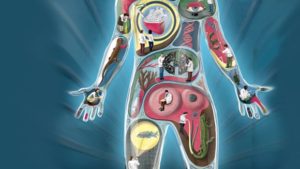Regenerative Medicine – A Closer Look
 The field of regenerative medicine involves using specialized stem cells in a lab to treat diseases. These cells can be instructed to behave like specific types of cells, such as skin, blood, or muscle. In many cases, this type of therapy can restore function to diseased organs or tissues, including heart disease and congenital defects. Indianapolis regenerative medicine offers excellent info on this.
The field of regenerative medicine involves using specialized stem cells in a lab to treat diseases. These cells can be instructed to behave like specific types of cells, such as skin, blood, or muscle. In many cases, this type of therapy can restore function to diseased organs or tissues, including heart disease and congenital defects. Indianapolis regenerative medicine offers excellent info on this.
As a relatively new field, regenerative medicine has many potential uses. It has the potential to revolutionize the way diseases are treated. The main goal of this medicine is to mimic the natural healing process of the human body. This includes finding therapies that mimic the body’s own repair mechanisms and replacing damaged tissue and organs.
While surgery is the primary method for repairing injured tissues, stem cell therapy can also be used to reduce pain. It has also been used to repair tears in the rotator cuff. A torn rotator cuff is painful and often requires surgery, but stem cell and PRP therapy can help patients avoid the need for surgery.
In addition to replacing damaged organs, regenerative medicine involves growing tissues and organs in the lab. This is an excellent treatment for severe trauma and disease, and can even eliminate the need for organ transplants. This technology uses a patient’s own cells to produce new organs, eliminating the risk of rejection and immunological mismatch. This approach may be the future of organ transplants.
While the research on regenerative medicine is limited, there are several treatments being developed. Some of these therapies use platelet-rich plasma (PRP) or adipose-tissue concentrate (BMAC). These substances contain molecules that promote new tissue growth. Patients should consult with their doctors to determine the best treatment option for their particular condition.
A major concern for regenerative medicine is the high cost. As the field advances, a range of prices will likely be necessary to make this type of therapy feasible. The costs of regenerative medicines are expected to remain high, but the potential benefits may outweigh the costs. Moreover, the cost may only be incurred once for a permanent benefit.
There is currently a number of treatments available that use somatic cell-derived stem cells. But this therapy is limited by the fact that the somatic cells are limited in their targets. Stem cells, on the other hand, are more versatile and can target a broader range of diseases. Therefore, researchers are focusing their efforts on identifying suitable cell sources for regenerative medicine.
Regenerative medicine also has the potential to overcome a variety of ethical issues. However, it is important to remember that this therapy relies on the cell’s regenerative capacity. In addition, regenerative medicine can be regulated and the FDA has set strict regulations to help improve patient care. The development of regenerative medicine has already opened new doors for patients.
CONTACT INFO
QC Kinetix (Greenwood)
5510 S East St, Bldg A, Suite G
Indianapolis, IN 46227
(463) 235-7160
